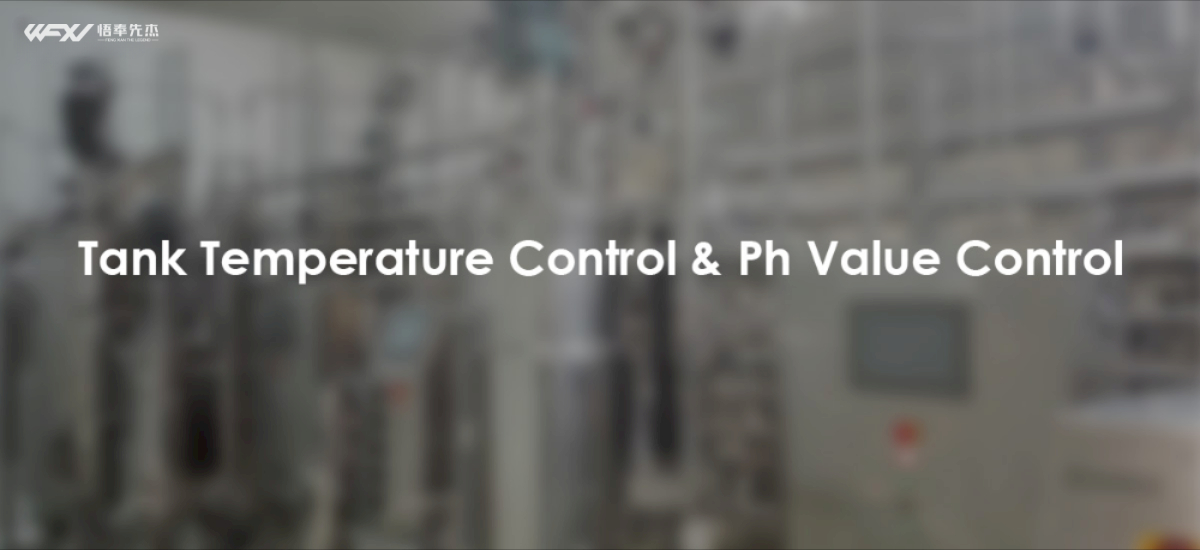
The operation of the fermenter is a rigorous work, and how to control the parameters in the fermenter process is very important. There are many process parameters. Today we will talk about the tank temperature control and PH value control in the fermentation tank process.
1. Tank temperature control
The temperature of the tank will affect the rate of the enzyme reaction and the solubility of oxygen in the culture medium during the fermentation process, which is closely related to the growth of the bacteria, the synthesis of antibiotics and the dissolved oxygen.
Tank temperature control Tank temperature control mainly includes the control of heating and cooling. Among them, the heating amount is calculated by the process; the cooling amount refers to the cooling amount required after heating or sterilization and under the specified cooling time. The tank temperature control device consists of a heater and a cooling water solenoid valve. When the temperature in the fermentation tank is lower (or higher) than a certain set value, the system will automatically turn on the heater (or cooling water solenoid valve) to achieve The purpose of controlling the temperature of the fermenter.
The cooling amount is obtained by calculating the cooling amount required under the specified cooling time, and the heating amount is obtained by calculating the heat required under the specified heating time. From the enthalpy calculation and the heat transfer rate, the heat transfer area is obtained, that is, the area of the jacket or coil of the fermenter.
Only by calculating the length of the pipeline, the pressure of the medium and the pressure loss can the diameter of the heat exchange tube be determined, and then the diameter of the control valve. The diameter of the control valve is based on the control fluctuation of the culture temperature as the main parameter. If the control fluctuation of the culture temperature is used as a parameter to calculate, the opening degree of 60% to 80% can often be set as a stable value; if the sterilization heating time is to be taken into account, the value can be lower, and the culture temperature is controlled to fluctuate. The amount will be larger.
In a temperature control system with a hot and cold jacket, if the above-mentioned process parameters are calculated properly, the parameter control is relatively accurate, and the process parameters can be obtained by the calculation of the soaring curve or the empirical method. In the tank temperature control that takes into account both cultivation and sterilization, PID automatic control is used, and the fluctuation control range of the cultivation temperature is ±0.1 °C.
Among them, the differential action can improve the dynamic response speed, and the integral action can effectively eliminate the static error, so that the ambient temperature does not affect the tank temperature control. Of course, the design of the heat exchange jacket should be as thin as possible to reduce the fluctuations caused by the temperature control lag.
Sterilization control According to the process and GMP requirements, the fermentation equipment should be cleaned, disinfected or sterilized. The sterilization method commonly used in fermenters is moist heat sterilization. In the sterilization temperature control, the steam trap valve is often used in the pipeline of the advanced fermentation tank to replace the traditional steam trap, but there are certain requirements for the design of the sterilization system, the steam pipeline and the valve diameter.
In the design of the sterilization program, the steam passing time and the draining time interval should be matched. At the moment when the draining diaphragm valve is opened, the pressure of the tank body is almost unchanged, and the condensed water is effectively drained, and no cold spots appear in this process. In the sterilization temperature control, the temperature fluctuation period in the heating curve should be considered, and it is generally set to be officially timed 1 min after reaching the set temperature to meet the F0 value requirements of moist heat sterilization.
2. pH value control
The pH value of the fermentation broth is a comprehensive reflection of the acidity and alkalinity of various biochemical reactions during the fermentation process.
There are two types of pH value control and pH value feeding. The pH value control and feeding system is mainly composed of a peristaltic pump (or other conveying system) and a weighing system. In addition to the weighing system, these control systems are greatly affected by the pressure difference between the tanks, including pressure changes caused by the liquid level. The weighing system is also affected by the fluctuation of the liquid level, so it depends on the size of the tank and the ratio of diameter to height. Take into account the usage situation.
At present, the pH control device consists of an acid addition peristaltic pump and an alkali addition peristaltic pump. When the pH value is higher than the set value, the system automatically starts the acid addition peristaltic pump, and feeds acid into the fermenter in a time-proportional manner until the set value; when the pH value is lower than the set value, the alkali addition peristaltic pump starts to adjust.